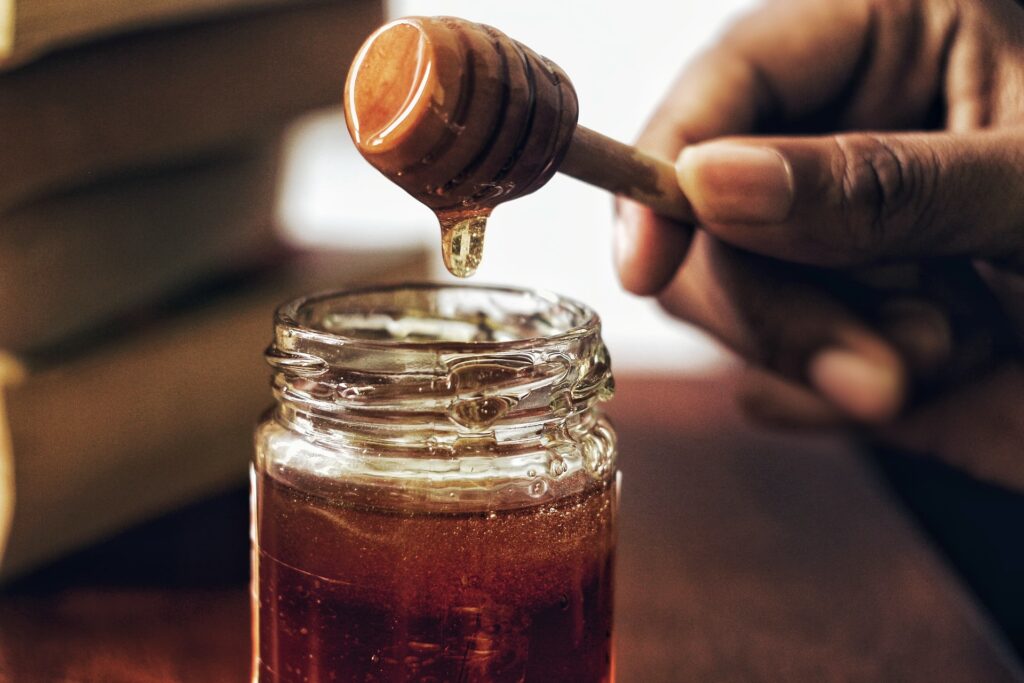Sweeteners and Glycemic Index: How Does It Work?5 min read
What is a glycemic index?
The Glycemic Index (GI) is a ranking of carbohydrates based on their effect on blood glucose levels. The GI ranks foods from 0 to 100, with lower numbers indicating that food raises blood sugar less than foods with higher numbers.
The GI ratings are broken down into 3 levels:
- Low: 55 or less
- Medium: 56–69
- High: 70 or above
Carbohydrate foods that are high in GI are broken down faster by your body and can cause a spike in blood glucose. These foods include any sugary foods and drinks, white bread, potatoes, and sugar itself.
Low- or medium-GI carbohydrates are broken down more slowly, resulting in a progressive increase in blood sugar levels over time. These foods include fruits, vegetables, wholegrain foods, and foods that are high in protein, fibre, or fat typically have a lower GI.
See the table below for a full glycemic index chart of the most common sweeteners.

Artificial sweeteners and glycemic index: is it healthy?
In the last few decades, sugar has been demonized as a health hazard. This is because it’s highly processed and high in calories without any nutritional value. As a result, many people have begun looking for an alternative sweetener to use instead of sugar.
One option that has become popular is sucralose, which may be marketed under the brand name Splenda®.
Sucralose is an artificial sweetener that has no calories and has 0 on the glycemic index. Sucralose has been used as a sugar substitute and can be found in many products such as chewing gums and diet sodas, but sucralose is not a natural sweetener. Though, sucralose is approximately 600 times sweeter than regular sugar, so keep an eye on the portion when using sucralose.
Sucralose shares some properties with table sugar (sucrose) such as sweetness and bulkiness but does not contain glucose or fructose like sucrose does. For this reason, sucralose doesn’t cause your blood sugar levels to rise very much – about 1/3 less than table sugar according to one study .
Splenda® is a famous brand for sucralose, but it’s only 5% sucralose by volume. However, the ingredients in Splenda contain mostly dextrose and maltodextrin, which have a similar number of calories as sugar and have an index of 100. That is to say, they raise blood sugar in the same way that table sugar does.
Whether sucralose is a healthier substitute or not has been a debate for many years. Many experts say that sucralose is safe and is even approved by the FDA, but some studies, however, suggest that it is not safe and may increase blood sugar levels, cause weight gain, and raise heart disease and cancer risk. Consider that diets high in added sugars are associated with poor health outcomes.
In addition, Sucralose has not been studied in humans. The majority of the research on food safety for sucralose was conducted on mice. Therefore, the long-term benefits of sucralose remain unclear.
Sugar in general is not a healthy choice. Sucralose might be a slightly better option than regular sugar in some ways, but keep in mind to consume it in moderation, and avoid using sucralose in baking and high heat cooking.

Stevia sweetener
Another popular sugar alternative is Stevia. Stevia sweeteners are produced from steviol glycosides that have been extracted and purified from the leaves of Stevia rebaudiana plant. Stevia is about 250 times sweeter than sugar, has no calories and is 0 glycemic index.
The FDA has approved the use of steviol glycosides in food, but not whole Stevia leaves or crude extracts, although you may be able to get them from unapproved supplements by the FDA.
Stevia is generally safe to consume with moderation. 4 milligrams (mg) per kilogram of body weight, or about 1.8 mg per pound of body weight, is the FDA and WHO’s acceptable daily intake (ADI) for Stevia sweeteners, which people usually consume way lower than the ADI.
Stevia may be a better alternative to sugar, especially if you have high blood sugar or diabetes. However, Stevia has been linked to kidney and liver disease, but more in-depth studies are still needed to determine how damaging Stevia is.
Even though both Splenda and Stevia have a low glycemic index as artificial sweeteners, we can conclude that focusing just on glycemic index itself is not enough to determine whether certain types of sweetener is better or not. it is favourable to opt for other types of sweetener, which will be discussed below.
It is best to limit your intake of all added sweeteners, whether they’re high or low on the glycemic index. A better option would be to substitute half of your usual sugar requirement with some fruit purées (i.e., applesauce) or mashed dates (i.e., Medjool dates). This way you can reduce both the calorie and carbohydrate content of your recipe while boosting its nutritional value by making it denser in antioxidants and fiber. Let’s hop into the more in-depth explanation about the better sweeteners choice.
Which sweetener is better for you and which to avoid?
There’s nothing wrong with adding some sweetener to your food to fulfill your satisfaction and not torture yourself in your diet. To achieve this, it’s best to opt your sugar to better alternatives.
First of all, it is important to know that what causes insulin levels to spike are sucrose (cane sugar) and glucose, whereas fructose doesn’t.
Fructose mostly can be found in fruits, but it is not recommended to consume more than 50 grams of fructose per day as too much fructose can be a challenge for the liver to metabolize. If this quantity is exceeded, the liver will start to produce free radicals instead.
In conclusion to finding better sugar are the ones that have a low glycemic index, a lower amount of fructose, and additional nutrients that cane sugar does not offer.
Here are some of the best alternatives that have a lower number of fructose and are low on the glycemic index.
- Raw honey – one of the best alternatives made from real food. Do note that honey contains a higher fructose level, but it’s relatively low on the GI. Substituting to honey may also lower your blood sugar level and maintain your weight according to a study.
- Date syrup – date syrup is actually made from a fruit and is low in glycemic index. It is also packed in magnesium, phosphorus, zinc, and potassium that helps your body slow down the regulation of sugar in the bloodstream.
- Coconut sugar – comes from blossoms of the coconut tree that is high in potassium, electrolytes, and inulin fiber which helps balance blood sugar level. It is the best sugar alternatives in baked goods.
- Maple syrup – maple syrup comes straight from trees, and is minimally processed. It has low glycemic index and low fructose level. However, always check the label when buying maple syrup to avoid those with added corn syrup or ‘maple flavoring’

Sweeteners to avoid:
- Artificial and low-calorie sweeteners, such as aspartame, sucralose, saccharin, and neotame. It is best to use the better sugar alternatives than to use these artificial ones.
- Agave syrup: even though agave has low glycemic index and has been promoted as a healthier alternative, it still contains high fructose levels. Opt for maple syrup instead.
- High-fructose corn syrup: this syrup is chemically processed and will spike your insulin level. Your body doesn’t even process it, it goes straight to your bloodstream.


3 Comments